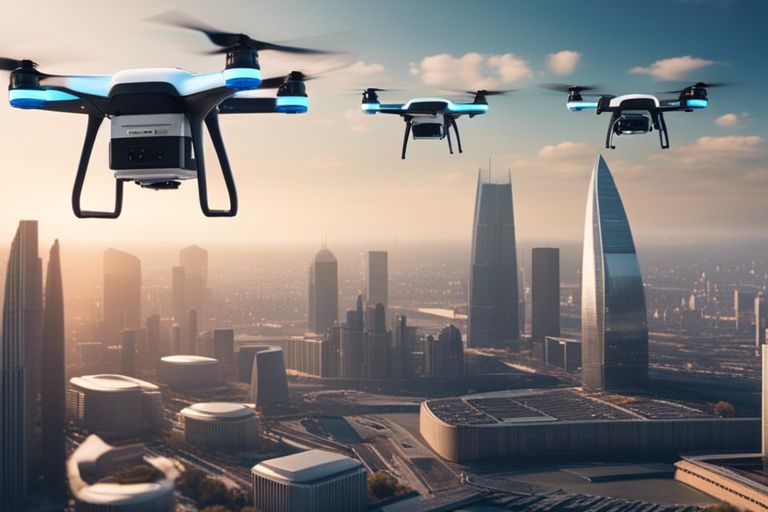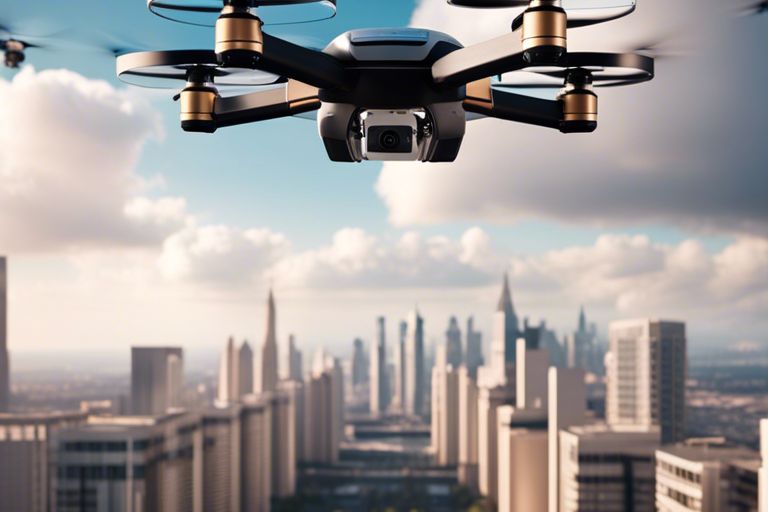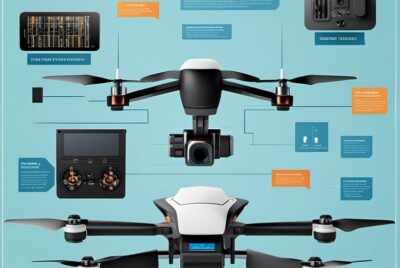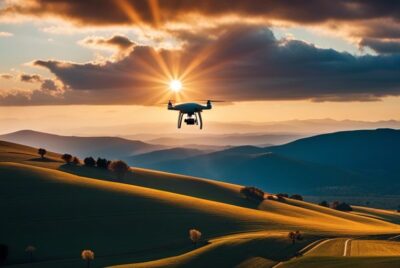“The Future of Drone Delivery – Challenges and Innovations”
Drones have revolutionized the way we perceive delivery systems, offering efficient and speedy solutions to transport goods. As this technology continues to advance, the future of drone delivery brings with it a new set of challenges and innovative solutions. From regulatory hurdles to technological limitations, this blog post will explore the landscape of drone delivery, discussing the obstacles that need to be overcome and the groundbreaking innovations that are shaping the future of this industry.
The Evolution of Drone Delivery
From Concept to Reality
With advancements in technology and a growing need for faster delivery services, the concept of drone delivery has transitioned from sci-fi imagination to real-world applications. Companies like Amazon, UPS, and Google have been leading the way in transforming this futuristic idea into a viable solution for last-mile delivery challenges.
Today, drones equipped with advanced sensors, cameras, and GPS navigation systems can autonomously navigate urban landscapes and deliver packages to customers’ doorsteps with precision and efficiency. The evolution of drone delivery has sparked new possibilities in logistics, revolutionizing the way goods are transported and enhancing the customer experience.
Milestones in Drone Delivery History
On a historical timeline, significant milestones mark the progress of drone delivery. From the first successful commercial drone delivery by a company like Flirtey in 2015 to the FAA’s approval of UPS Flight Forward for drone airline status in 2019, the industry has seen remarkable advancements in a relatively short span of time.
Drone delivery services have expanded globally, with pilot programs and partnerships with governments and regulatory bodies to test and implement drone delivery services in various regions. These milestones pave the way for a future where drone delivery is not just a concept but a mainstream reality in the logistics industry.

Challenges in Drone Delivery
Regulatory Hurdles
If the future of drone delivery is to reach its full potential, it must navigate through various regulatory hurdles. Any operation involving drones needs to adhere to strict guidelines set by aviation authorities and local governments. Without proper regulations in place, the safety and efficiency of drone delivery services could be compromised.
From airspace restrictions to privacy concerns, regulations play a crucial role in shaping the landscape of drone delivery. Companies investing in drone technology must work closely with regulatory bodies to address issues such as flight paths, altitude limits, and licensing requirements.
Technical Limitations and Safety Concerns
Safety is paramount in the development and deployment of drone delivery systems. Any technical limitations or safety concerns can pose significant obstacles to the widespread adoption of this technology. Ensuring that drones can navigate accurately, avoid obstacles, and withstand adverse weather conditions is essential for their success.
For instance, the limited battery life of drones can restrict their range and payload capacity, which in turn affects their efficiency in delivering packages. Innovations in battery technology and flight planning algorithms are crucial to overcoming these technical limitations and enhancing the safety of drone delivery operations.
Safety: For instance, drones must have systems in place to prevent collisions with other aircraft and structures, as well as protocols for safe landing and takeoff procedures. Continuous monitoring and updates to software and hardware are necessary to address any potential safety risks that may arise during drone deliveries.
Public Perception and Privacy Issues
Public perception of drones and concerns about privacy can also present significant challenges for the future of drone delivery. Public acceptance of drones flying overhead and delivering packages to their doorsteps is crucial for the widespread adoption of this technology. Addressing privacy issues related to data collection and surveillance is essential to build trust with consumers.
Public awareness campaigns and transparent communication about the benefits and safeguards of drone delivery can help alleviate concerns and foster a positive perception of this innovative technology. Striking a balance between convenience and privacy will be key to overcoming public perception and privacy issues in the realm of drone delivery.
Public: It is important for companies to engage with communities and stakeholders to address any apprehensions or misconceptions about drone delivery. By soliciting feedback and implementing privacy protection measures, companies can build a foundation of trust and acceptance among the public, paving the way for the widespread adoption of drone delivery services.
Challenges
While the future of drone delivery holds great promise for revolutionizing logistics and e-commerce, there are several challenges that must be addressed to ensure its success. Regulatory hurdles, technical limitations, safety concerns, public perception, and privacy issues all play integral roles in shaping the landscape of drone delivery. By navigating through these challenges with innovation and collaboration, the potential benefits of drone delivery can be maximized while mitigating risks.

Innovations Driving Drone Delivery Forward
Advances in Autonomous Flight Technologies
For the future of drone delivery, advancements in autonomous flight technologies play a crucial role in driving efficiency and safety. The development of sophisticated artificial intelligence algorithms enables drones to navigate complex urban environments, avoid obstacles, and optimize delivery routes with minimal human intervention.
The integration of real-time data analytics and sensor fusion technology allows drones to make split-second decisions and adjustments, ensuring smooth and reliable deliveries. These innovations not only enhance the capabilities of drones but also contribute to the scalability and sustainability of drone delivery services.
Battery Life and Energy Efficiency Improvements
Flight endurance and energy efficiency have been significant challenges in the drone delivery industry. However, advancements in battery technology, such as the adoption of high-energy-density lithium-ion batteries and the development of quick charging solutions, have significantly improved the flight time and operational efficiency of drones.
Forward-thinking companies are also exploring alternative power sources, such as hydrogen fuel cells and solar panels, to further extend the range and capabilities of drones. These innovations pave the way for longer flight durations and increased payload capacities, making drone delivery more viable and cost-effective in the long run.
Forward, the continuous research and development in battery technology are essential for overcoming the limitations of current power sources and enhancing the sustainability of drone delivery operations. By pushing the boundaries of energy storage and efficiency, companies can unlock new possibilities for autonomous aerial logistics and revolutionize the delivery industry.
Collision Avoidance Systems and Air Traffic Management
Innovations in collision avoidance systems and air traffic management are critical for ensuring the safe integration of drones into shared airspace. Advanced radar, lidar, and computer vision technologies enable drones to detect and avoid obstacles in real time, mitigating the risk of mid-air collisions and ensuring safe deliveries.
Technologies such as geo-fencing and dynamic route planning algorithms help drones navigate congested airspace and comply with aviation regulations, promoting responsible and sustainable drone operations. By investing in robust collision avoidance systems and collaborative air traffic management solutions, the drone delivery industry can achieve widespread adoption and acceptance in the future.

Future Projections and Potentials
Integration with Urban Spaces
Integration of drone delivery systems with urban spaces is a pivotal aspect shaping the future landscape of last-mile logistics. As urban areas face increasing congestion and traffic challenges, drones offer a promising solution to expedite deliveries and reduce carbon emissions. The potential of utilizing rooftops as drone landing pads and designated drone corridors within cities could revolutionize the efficiency and speed of deliveries.
Furthermore, advancements in automation and artificial intelligence are enabling drones to navigate complex urban environments with precision and safety. With the integration of real-time data analytics and route optimization algorithms, drones can adapt to changing traffic conditions and ensure seamless delivery operations in densely populated areas.
Expanding Applications and Market Growth
Market projections indicate a significant growth trajectory for drone delivery services in the coming years. Beyond the traditional retail and e-commerce sectors, drones are finding applications in medical supply chain management, disaster relief operations, and even food delivery services. The versatility of drones in accessing remote or hard-to-reach locations opens up a wide range of possibilities for future applications.
With the increasing demand for contactless delivery options and the continuous advancements in drone technology, the market for drone delivery services is expected to expand exponentially. Companies are actively investing in research and development to enhance the capabilities of drones, such as increasing payload capacities and extending flight ranges, to cater to diverse industry needs and consumer demands.
With the rapid evolution of drone technology and the favorable regulatory environment supporting their integration into the airspace, the future of drone delivery holds immense potential for transforming logistics and supply chain operations on a global scale.
Final Words
The future of drone delivery is filled with exciting possibilities, as businesses continue to innovate and overcome challenges in this rapidly evolving industry. From regulatory hurdles to technical constraints, the advancement of drone delivery services will require collaboration between companies, governments, and other stakeholders. By embracing new technologies and implementing innovative solutions, the potential for efficient and sustainable delivery methods through drones is within reach. As we navigate these challenges and advancements, it is crucial for all parties involved to prioritize safety, security, and environmental considerations. With a shared commitment to addressing these challenges and embracing innovation, the future of drone delivery holds great promise for transforming the way goods are transported across the globe.



